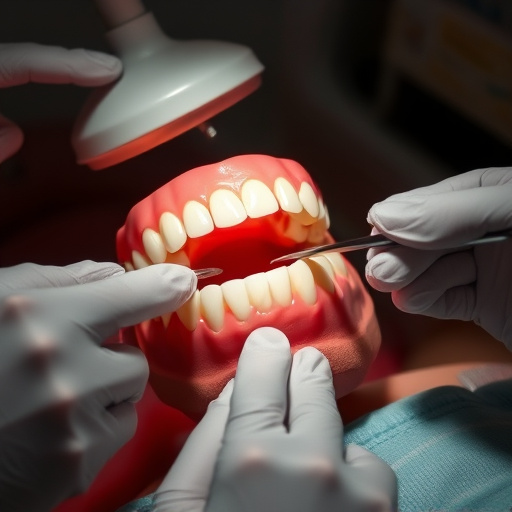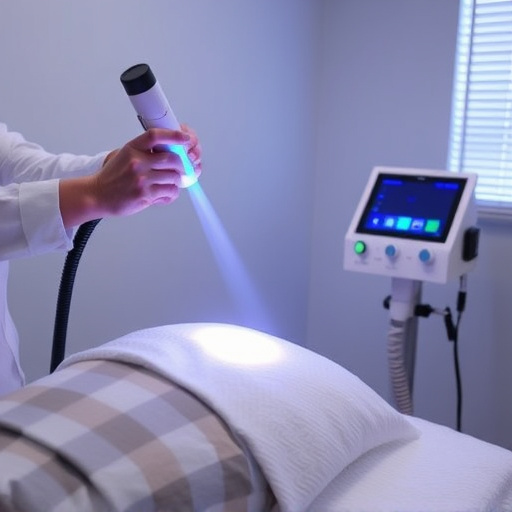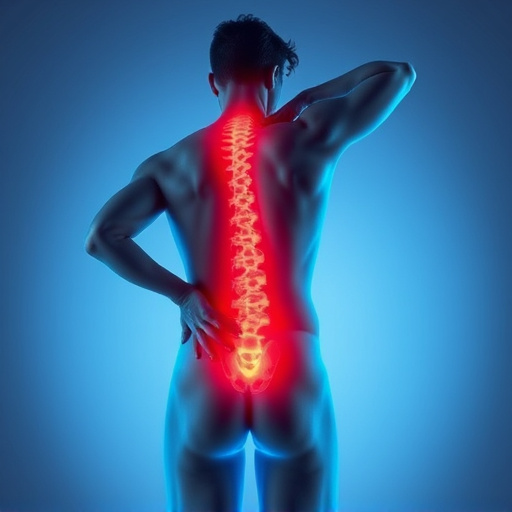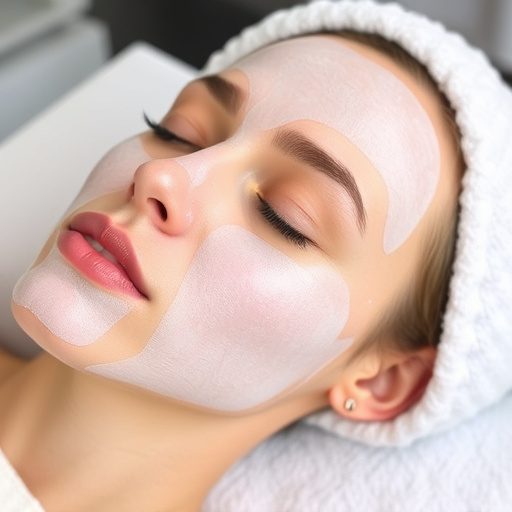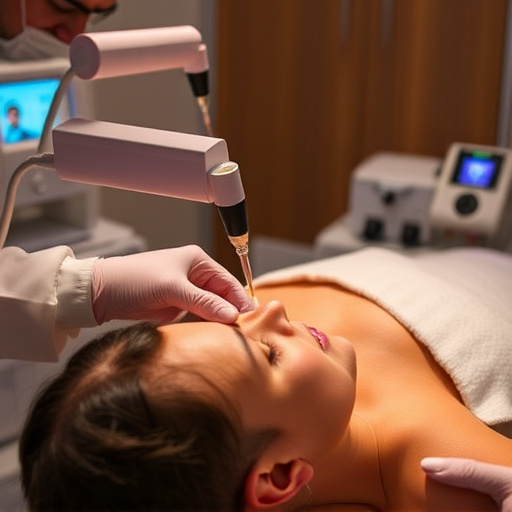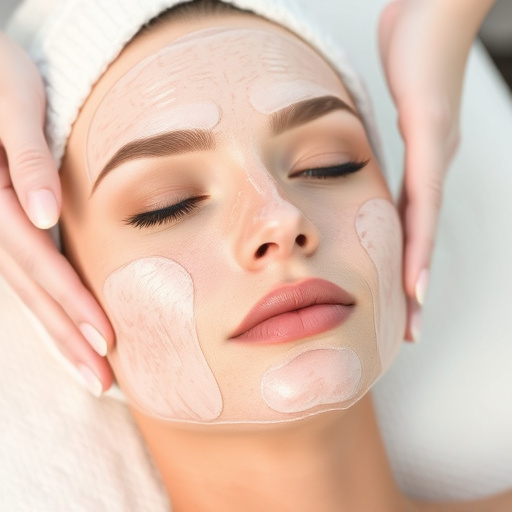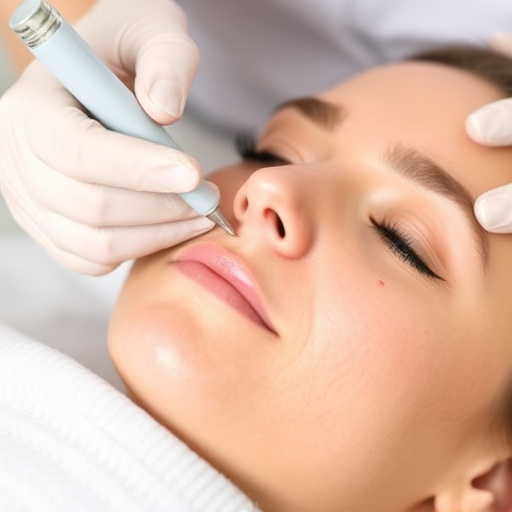Scar reduction therapy using laser and microneedling treats post-acne scars and surgical incisions by stimulating collagen production for improved skin texture and reduced scar visibility. While safe under qualified care, these procedures carry risks like redness and discomfort, emphasizing the importance of choosing a reputable medical spa. Results vary based on scar type and severity.
Advanced scar reduction therapy using laser or microneedling offers innovative solutions for minimizing scar appearance. Understanding scar formation and its impact is crucial before exploring these cutting-edge techniques. This article delves into the science behind lasers and microneedling, their safety and efficacy, and the remarkable patient outcomes they deliver. Discover how these modern methods transform skin, reducing scars to nearly invisible remnants, providing lasting beauty enhancements.
- Understanding Scar Formation and Its Impact
- Laser and Microneedling: Innovative Techniques
- Safety, Efficacy, and Patient Outcomes
Understanding Scar Formation and Its Impact

Scar formation is a natural part of the healing process after an injury or surgical procedure. When skin is damaged, fibroblasts—specialized cells responsible for collagen production—race to the site to initiate repair. While this results in new tissue growth, it often leads to scar formation, which can vary in appearance and severity. Some scars, like those from acne or surgery, may be raised, depressed, or hyperpigmented compared to surrounding skin, impacting both physical and psychological well-being.
The impact of scars extends beyond mere aesthetics. They can cause discomfort, limit movement, and affect self-confidence. Understanding scar formation is crucial in developing effective scar reduction therapies like laser treatments and microneedling therapy. Microneedling therapy involves creating tiny punctures in the skin to stimulate collagen production and promote tissue repair. This non-invasive procedure not only improves the appearance of scars but also aids in pore refinement, a key aspect of anti aging treatments, making it a popular choice for scar reduction therapy.
Laser and Microneedling: Innovative Techniques

Laser and Microneedling represent cutting-edge techniques within the realm of scar reduction therapy. These innovative procedures offer advanced solutions for various skin concerns, from post-acne scarring to surgical incisions. Lasers utilize targeted light energy to stimulate collagen production, fostering a process that enhances skin elasticity and smoothens scars over time. The precision of laser treatments allows for minimal discomfort and quicker recovery periods compared to traditional methods.
Microneedling, on the other hand, involves using fine needles to create tiny channels in the skin. This controlled trauma encourages the body’s natural healing response, resulting in increased collagen and elastin production. Microneedling is particularly effective for deeper scars and can be tailored to different skin types. When combined with professional skincare protocols, these techniques offer transformative results, not just in scar reduction but also in achieving a more even and youthful complexion, sometimes even mimicking the effects of body contouring and laser hair removal.
Safety, Efficacy, and Patient Outcomes

When it comes to scar reduction therapy, safety is paramount. Both laser and microneedling procedures are generally considered safe when performed by a qualified professional using appropriate equipment. However, as with any medical treatment, there are risks and potential side effects. For instance, mild redness, swelling, and discomfort are common after treatments, but more severe reactions are rare. It’s crucial for patients to choose a reputable medical spa offering these services, ensuring licensed practitioners use state-of-the-art equipment to minimize complications.
The efficacy of scar reduction therapy using laser or microneedling has been well-documented in numerous studies. These treatments stimulate collagen production, which helps to improve skin texture and reduce the appearance of scars. In terms of patient outcomes, many individuals experience significant improvements, especially with recurring or deep scars. However, results may vary based on factors like scar type, severity, and individual healing capacity. Choosing the right treatment approach tailored to their specific needs is key for optimal outcomes in scar reduction therapy.
Advanced scar reduction therapy using laser or microneedling offers promising solutions for those seeking to minimize the appearance of scars. By understanding scar formation and leveraging innovative techniques like laser and microneedling, individuals can experience improved skin texture and reduced scarring. Safety and efficacy studies continue to demonstrate positive patient outcomes, making these therapies a viable option for scar reduction. Incorporating these advanced treatments into skincare routines can help restore confidence and enhance overall skin health.
